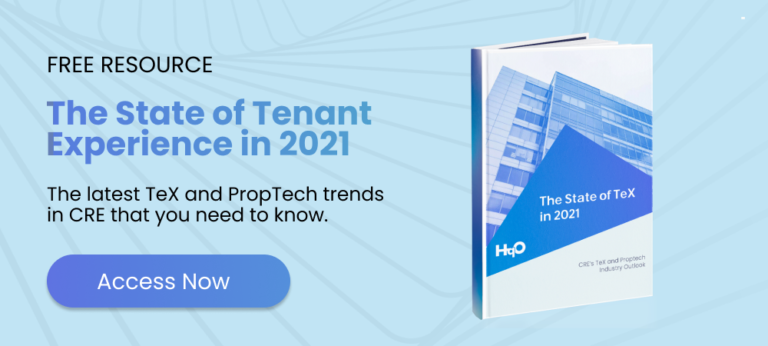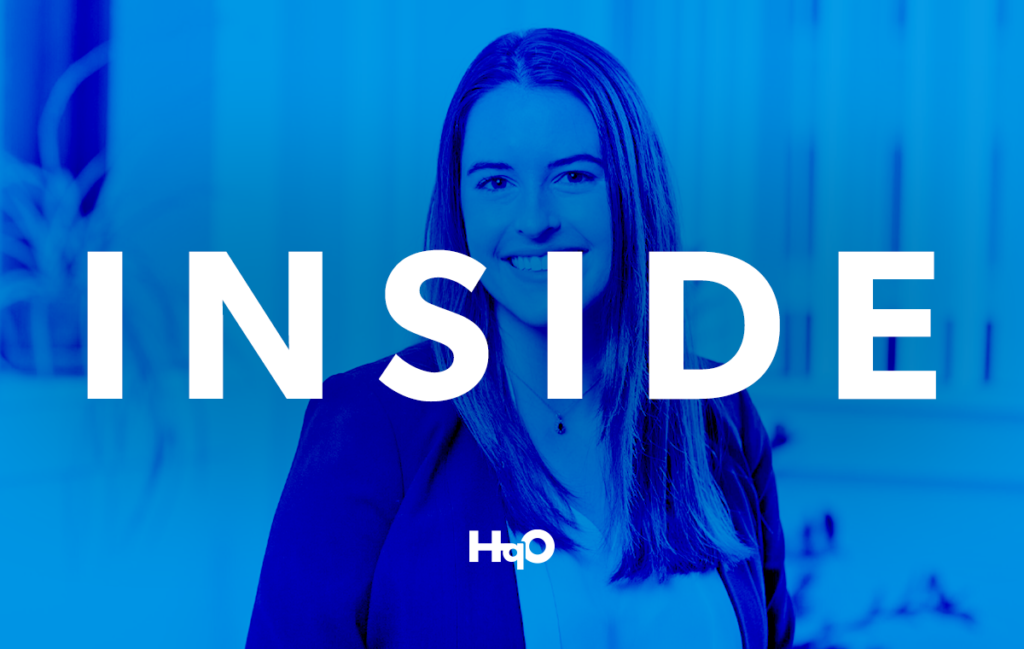Tenant experience has been on everybody’s minds. Whether you’re an owner or property manager looking to bring office workers safely back to the building, an employee seeking out a flexible and modern office environment, or one of the many proptech companies available in the market to fulfill those needs, the focus on commercial real estate’s end-users has understandably become a necessity. Office buildings can no longer just be a building. Rather, office buildings must be paired with a modern tenant experience strategy that will help CRE teams differentiate their assets and increase building occupancy.
However, it’s one thing to just implement tenant experience technology. It’s an entirely different scenario when you implement technology with a “future think” mindset: Will this technology be able to solve for my portfolio’s long-term goals? Can certain features that provide immediate solutions be easily repurposed when needed? Am I partnered with the right team(s) to help facilitate and deploy these efforts?
If we learned anything from this past year, it’s that no challenge is off the table in terms of what the office sector may face. To set CRE up for success, the future of tenant experience is all about adaptability.
Lessons from the Pandemic
Perhaps the most notable examples of adaptability come from the property teams that have remained engaged with their tenants throughout the COVID-19 pandemic. For some, this looked like starting the process of proptech adoption to test-drive new technology while fewer people were in the building. For others, this looked like leveraging already-existing tenant apps as a critical communication and engagement tool. Here are two examples of successful adaptability:
- With the onset of the COVID-19 pandemic, Hudson Pacific implemented a range of solutions to keep their buildings safe. One near-term priority was the ability to conduct real-time communication with tenants. They saw tenant experience technology as a way to update occupants of key operational changes and nurture trust during a time of major uncertainty. HqO and Hudson Pacific worked together to provide an initial, lightweight version of the tenant app that would serve as a communication tool for the pandemic. Because there was an urgent need to communicate directly with tenants, they were able to expedite this process and launch the app across 31 of Hudson Pacific’s multi-tenant properties in less than 30 days.
- Before the arrival of COVID-19, The Swig Company had already begun to heavily invest in tenant engagement across their properties. Once the pandemic hit and separated their workforce, they realized that this would be a valuable tool for staying in contact with tenants and conveying important information. Swig partnered with HqO to send notifications about changing building policies, safety information, timelines, and what to expect when returning to the office. Additionally, HqO expanded Swig’s digital content offerings for its tenants, including work-from-home tips and virtual wellness classes.
Another Way to Pivot
As vaccines become more and more accessible, troubles associated with the pandemic will settle and workers will return back to the office. However, this does not mean that CRE landlords and property teams should forgo maintaining an adaptable approach to tenant experience. At HqO, we learn the most from our customers, and we’ve seen first-hand how ingenuity can come from anywhere — and be prompted by any circumstance.
A recent example of agility comes from TMT Development, who set a precedent for what it means to excel as a community resource. A few weeks ago, the city of Portland, Oregon faced a severe weather advisory that left many residents without water or electricity. Thinking on their feet, TMT reached out to our dedicated HqO experts — the providers of their whitelabeled Tenant Experience Platform — to discuss ways to help those in need through the amenities located at their mixed-use Fox Tower property. The result was impactful and efficient: within just a few hours, HqO had built a custom reservation system to accommodate booking requests for four of Fox Tower’s locker rooms. Not only could the new solution manage capacity through allocating specific time slots — thus still being mindful of modern health and safety regulations — but it created immediate access to on-site showers and electricity for a struggling community.
TMT’s story reveals how tenant experience software can be used for just about anything, as long as you keep up with the flexibility of tenant needs and have the right support at your disposal. As CRE continues to evolve alongside new technological innovations, our approach to tenant experience must evolve as well. After all, tenant experience is about more than what goes on within your building. It’s about the overall workplace community, and how you’re enabling the office to grow beyond the walls of your buildings.
To learn more about how HqO can help your tenant experience strategy remain adaptable and agile, schedule a free demo today.




